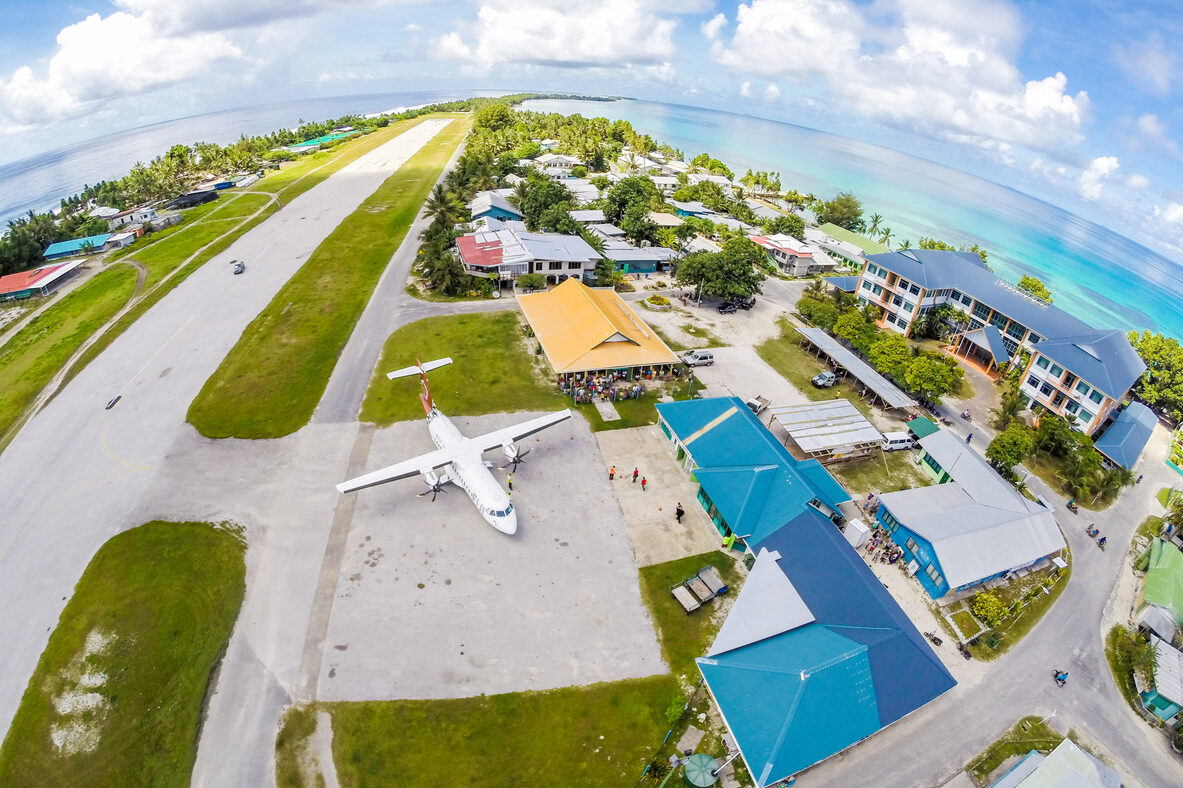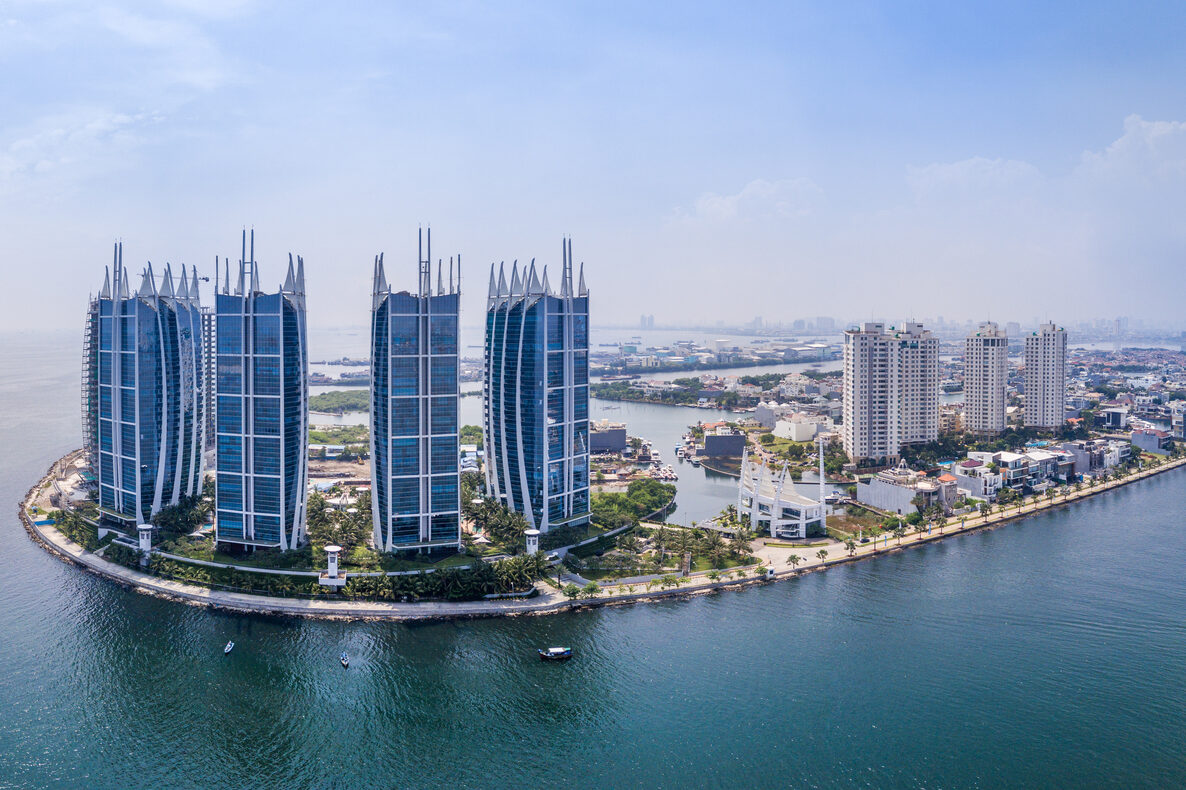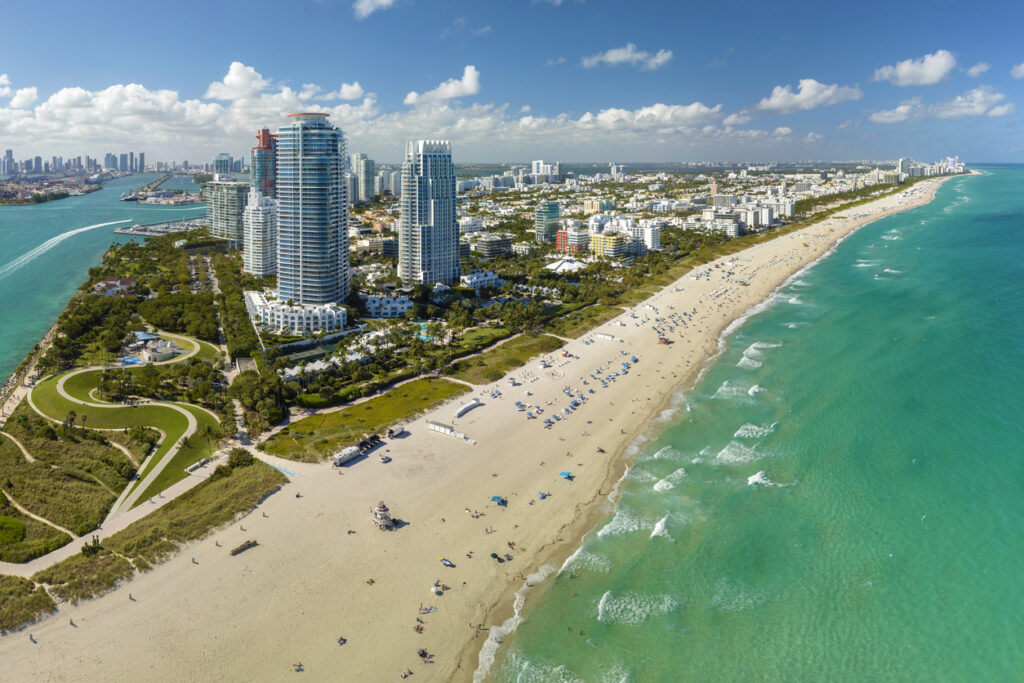1. Tuvalu – A Nation Sinking Into the Sea

Tuvalu is a small island country in the Pacific Ocean, home to just over 11,000 people. Its average elevation is only six feet above sea level, making it incredibly vulnerable to rising tides. Entire parts of the country have already been overtaken by water. Crops are dying from saltwater intrusion, and freshwater is becoming harder to find. It’s no longer a question of if the land will disappear, but when.
To survive, Tuvalu has turned to digital preservation and political deals. The country is working with Australia to secure long-term migration pathways for its citizens. Leaders are also creating a virtual version of Tuvalu to preserve its culture in the digital world. Climate experts see Tuvalu as a warning sign for other coastal regions. It is one of the first nations actively preparing to become uninhabitable, showing how climate change is no longer a future threat but a present reality.
2. Isle de Jean Charles, Louisiana – America’s First Climate Refugees
In Louisiana, the Isle de Jean Charles has lost more than 90 percent of its land since the 1950s. Coastal erosion, rising sea levels, and storm surges have made it nearly impossible for residents to stay. The Biloxi-Chitimacha-Choctaw Tribe, native to this land, became the first federally recognized climate refugees in the United States when they were granted funds to relocate.
Their story is heartbreaking but increasingly common. As their homes were swallowed by water and roads became unusable, the community had no choice but to move inland. This was not just a relocation of people but a dislocation of history, culture, and tradition. Climate scientists see the Isle de Jean Charles as a warning for other Gulf Coast communities. The slow loss of land is speeding up across low-lying states, proving that climate change is already altering American geography in ways we can no longer ignore.
3. Nile Delta, Egypt – Ancient Lands at Risk
The Nile Delta is one of the most fertile regions in the world, supporting millions of Egyptians and a rich agricultural history. But today, it’s in danger. Rising sea levels from the Mediterranean are creeping inland, swallowing farmland and flooding homes. Compounding the problem is the Aswan Dam, which has reduced the natural sediment that used to strengthen the delta’s edges.
Saltwater intrusion is damaging crops, and entire towns face yearly flooding. If current trends continue, large portions of the Nile Delta could be underwater by the end of the century. Climate experts warn that millions may need to relocate in the coming decades. What makes this especially painful is that these lands have been cultivated for thousands of years. The loss of the delta would not only affect food supply but erase cultural history, showing how environmental damage can rewrite both maps and human heritage.
4. Fiji’s Coastal Villages – Communities Already on the Move
Fiji is no stranger to the harsh reality of climate change. Villages like Vunidogoloa have already been relocated due to sea level rise and frequent flooding. Saltwater is poisoning drinking water, damaging farmlands, and making daily life impossible for residents of low-lying areas. Over 40 more villages have been identified as next in line for relocation, and the government is preparing long-term plans.
This process, called “managed retreat,” is becoming more common in island nations. But it is not just a logistical issue, it is deeply emotional. People are leaving behind their homes, their histories, and sacred places that cannot be replaced. The Fijian government is working with climate experts to move communities safely and with dignity, but each relocation is a painful reminder that the planet is changing. These communities are not waiting for the future; they’re living it, one wave at a time.
5. Newtok, Alaska – A Village Sinking in the Tundra
In western Alaska, the village of Newtok is sinking. Built on permafrost, the ground beneath it is melting due to warming temperatures. The nearby Ninglick River is swallowing land faster each year, making homes unstable and forcing residents to move. In 2019, the first families began relocating to a new site called Mertarvik, built on higher, safer ground.
The move is not just about preserving homes; it’s about protecting a way of life. The Yup’ik people who live in Newtok have strong cultural and historical ties to the land. The community’s decision to move was not made lightly. Scientists estimate that dozens of other Alaskan villages will face similar fates in the coming years. Newtok is one of the earliest examples of a full-scale, climate-driven relocation in the U.S., showing how even some of the most remote and resilient communities can’t hold back the tides of change.
6. Jakarta, Indonesia – A Capital on the Verge of Collapse

Jakarta is one of the fastest-sinking cities in the world. Decades of over-pumping groundwater have caused land to subside, while rising seas push in from the coast. Today, nearly half of Jakarta lies below sea level. When heavy rains hit, streets flood even without storms. Drainage systems can’t keep up, and residents are often forced to wade through water to get to work or school.
In 2019, the Indonesian government announced it would relocate its capital to Borneo. This wasn’t just a symbolic move, it was a desperate one. Jakarta’s collapse is a prime example of how unregulated development, climate change, and poor infrastructure can converge into a crisis. Engineers and scientists agree that Jakarta’s problems will only get worse. For the people who call it home, the city is slipping away. Its challenges reflect the reality that sometimes, when land and water fight, water wins.
7. Stinson Beach, California – A Coastal Gem at Risk
Stinson Beach, located in Marin County, is known for its breathtaking views and laid-back charm. But rising sea levels are threatening to erase this scenic destination. Coastal scientists warn that by 2085, the area could experience more than three feet of sea level rise. This would destroy about one-third of the town’s beach and put dozens of homes at risk. Even without a major storm, high tides alone are enough to flood nearby roads and weaken infrastructure.
To defend the community, officials have proposed a $1.2 billion adaptation plan that includes raising roads and building protective dunes. But funding is limited, and time is running out. Some residents fear that efforts to protect the town are already too late. Stinson Beach is a reminder that even picturesque places are not immune to climate change. Its changing shoreline is forcing Californians to confront a future where beauty and stability no longer go hand in hand.
8. Bangladesh’s Sundarbans – A Drowning Forest
The Sundarbans, a vast mangrove forest shared by India and Bangladesh, is a natural barrier that has protected millions from cyclones and flooding. But this iconic ecosystem is now retreating. Rising sea levels, increasing salinity, and frequent storms are destroying vegetation and washing away land. Saltwater intrusion has already displaced thousands of families, and agriculture in the region is failing. The changes are slow but devastating, and they affect both people and wildlife.
Scientists estimate that more than 70,000 people have been forced to leave the Sundarbans due to unlivable conditions. As sea levels continue to rise, even more will follow. The forest, once a buffer against the climate, is now a victim of it. For those who live near or within the Sundarbans, this is not just an environmental crisis. It’s a humanitarian one. The loss of the Sundarbans would be a major blow to biodiversity and cultural identity.
9. Shishmaref, Alaska – Holding On to Melting Ground
Shishmaref is a small village located on a barrier island off the coast of Alaska. For decades, the Iñupiat people have lived here, surviving harsh winters and thriving in the Arctic environment. But now, their island is crumbling beneath their feet. Warming temperatures are melting the permafrost, and without that frozen foundation, homes are sinking and coastline is eroding fast. Fall storms bring waves that crash into what little land remains.
The community has voted multiple times to relocate inland, but federal funding delays have made it difficult to act. Many families remain on the island, knowing that one more storm could force an emergency evacuation. Shishmaref is a deeply personal example of climate change. It’s not theoretical or distant, it’s affecting people right now. The village represents a growing number of places where the ground is no longer solid, and where maps will need to be redrawn sooner rather than later.
10. Norfolk, England – Coastal Homes Falling Away
The eastern coast of England, particularly around Norfolk, is disappearing faster than residents can react. Homes that once sat comfortably inland are now teetering on cliff edges. In villages like Happisburgh, entire streets have collapsed into the sea. Storm surges, rising tides, and weak coastal geology make the region especially vulnerable. Government programs now offer buyouts to families in danger zones, but compensation does not always cover full losses.
This is called “managed retreat,” and it’s one of the few options left. Some residents accept the risk and stay behind, unable or unwilling to leave. For many, the hardest part isn’t just losing property, it’s saying goodbye to communities built over generations. Scientists monitoring the area say erosion will continue at alarming rates. Maps that once marked thriving neighborhoods now show blank coastal stretches. The heartbreak in Norfolk illustrates how climate change affects more than just nature, it touches every part of life.
11. New Zealand’s South Island – Towns Retreating Inland
Along New Zealand’s South Island, several low-lying towns are facing a difficult choice: move now or face rising waters later. Coastal areas like South Dunedin are already experiencing regular flooding due to rising sea levels and higher groundwater tables. Insurance companies are pulling out, and government officials are offering buyouts to residents ready to relocate. These planned departures are not driven by panic but by careful observation and future risk assessments.
What makes this situation especially painful is the loss of community. Schools, shops, and entire neighborhoods are being emptied in the name of safety. Engineers and climate experts agree that adaptation is possible, but for many places, moving is the most viable long-term solution. The story of South Island’s changing coastlines reflects a growing global trend. Climate change is no longer just a concern for faraway islands or polar regions, it is reshaping maps in stable, developed countries too.
12. Miami, Florida – A City Trying to Stay Afloat

Miami is a vibrant, fast-growing city built on limestone that acts like a sponge. As sea levels rise, water seeps up from underground during high tides, flooding streets even on sunny days. These “king tides” are now regular events in parts of the city. Engineers are installing massive pumps, raising roads, and reinforcing seawalls to buy time. But the cost of staying dry is high, and the clock is ticking.
Real estate developers continue to build, but neighborhoods like Little Havana and Liberty City are seeing property values change as flood zones expand. Some experts fear parts of Miami could be permanently underwater within a few decades. Residents are beginning to ask how long they can hold the line. Miami’s struggle shows that no amount of money or planning can fully stop what’s coming. The city isn’t just bracing for change, it’s already floating on borrowed time.
